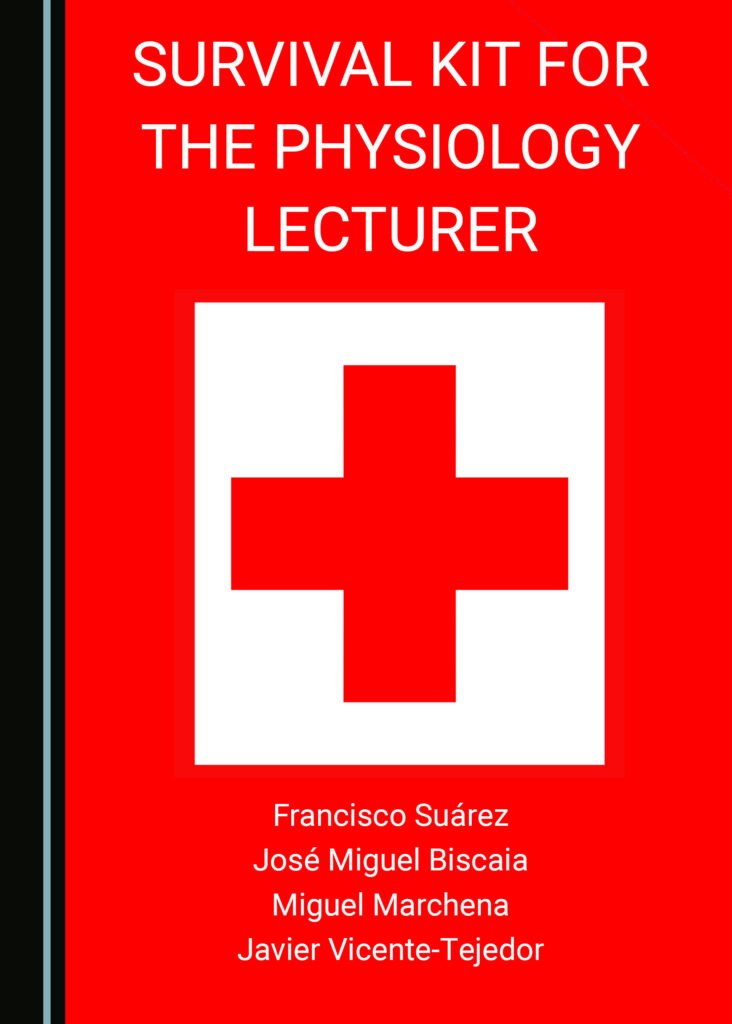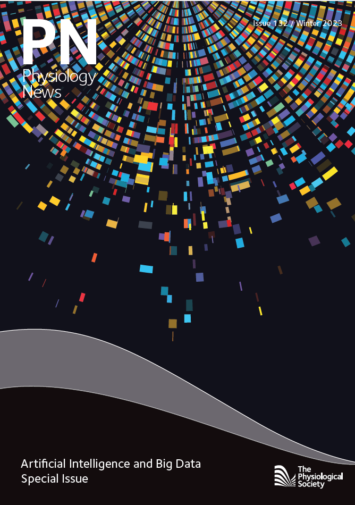
Physiology News Magazine
Book Review: Survival kit for the Physiology Lecturer by Francisco Suárez et al.
News and Views
Book Review: Survival kit for the Physiology Lecturer by Francisco Suárez et al.
News and Views
https://doi.org/10.36866/pn.132.12
Professor Zoran Redzic
Department of Physiology, College of Medicine, Kuwait University
“Just a soft reminder to send me exam questions for the coming exam by next Monday”.
Regardless of their teaching experience and seniority, most lecturers have a Pavlovian reflex that awakens anxiety every time this sentence comes up in an email. To help fellow lecturers, four physiology lecturers from Universidad Europea de Madrid and King Juan Carlos University in Madrid put together a remarkable set of physiology questions in a book. They aim to offer colleagues a “survival kit” for exam-question preparation.
The survival kit (i.e. this book) is a set of well-organised chapters that contain a staggering number of multiple-choice questions (MCQs) and short essay questions, covering all the main areas of human physiology. The value of the book lies in its extensiveness; it offers 750 pages that our community of physiology lecturers should be grateful for as a resource. Another feature of this book is that it is designed, as the authors say, as “… a scaffold on which you can lean” while preparing exams, i.e. more as inspiration for devising questions than providing questions that could be directly used in the exams. A lecturer should use this set of ideas for questions and put in extra effort and their specific expertise into making their desired structure out of the scaffolding provided, i.e. create exam questions appropriate for a particular exam in a particular course in a particular university.

The book is structured clearly, following the typical structures of physiology courses aimed at biomedical and life sciences undergraduate students. It consists of two main sections: Cell Physiology, and System Physiology, broken down further into several parts covering each section (e.g. the Cell Physiology section includes Nerve Cell Physiology, Muscle Cell Physiology, Immune Cell Physiology, to name but a few). Each part provides 15 to 30+ questions, mainly MCQs, but also short essay-based questions that cover main (key), advanced and specialised objectives (concepts) in that subchapter.
These objectives are listed at the beginning. In turn, each question is linked to a specific objective by a number in the brackets next to it. However, the authors admit in the Preface that the “… classification is strictly subjective, and it doesn’t reflect precisely whether the question is easy or difficult”. This makes it very easy to look for ideas for questions in a particular area of physiology. However, at this point the book crosses the line of oversimplification, by providing explanations for every correct answer and by linking every question to a particular concept / objective.
Explanations of correct answers, which in some cases are not brief at all, seem unnecessary for a physiology lecturer, but makes this book potentially desirable to students, who could use it as a surrogate for textbooks. Post-pandemic, I am sure we have all encountered the rapid proliferation of websites offering physiology MCQs with (often questionable) explanations in exchange for a paid subscription. Additionally, linking every question to a particular objective is unnecessary for a competent physiologist and could potentially confuse junior colleagues, since assessing a physiological mechanism (e.g. actions of insulin / leptin on the neurons) could be used in several areas of physiology, not only in one section. Thus, if the book is aimed to be purely “….a kit for the physiology lecturer”, then the oversimplification is superfluous. Lists of references are provided at the end of each part. This is helpful, although as they are mainly mainstream physiology textbooks, I think they would be well known to most physiology lecturers.
The book is generally aimed more at biomedical and life science students rather than at medical students, as most questions lack genuine clinical scenarios, which, according to some research, medical students prefer (Vegi et al., 2022). A review by, or help from, a medically qualified physiologist may be beneficial for the next edition. This could also improve the clarity of some answers, which the authors evidently provided bearing in mind a specific lecture, rather than a more applicable variety of broad concepts and clinical settings. For example, it is well known that the main symptoms of taking large doses of MDMA (ecstasy) are neurological (including excitation, anxiety, paranoia, headache, ataxia), cardiovascular (hypertension, palpitations) and gastrointestinal (nausea, vomiting), but the book offers “syndrome of inappropriate secretion of antidiuretic hormone” (SIADH) as the answer, which is only technically true under a very specific set of circumstances, albeit not very realistic.
The second main area for improvement in the book is to consider replacing true / false (T/F) MCQs (“which of the following is true…. Mark the correct statement……Indicate the false statement…”) and those that ask for definitions (“choose the best definition
for….”), which this book heavily relies on, with MCQs that assess concepts. T/F MCQs are no longer seen as a reliable test by medical educationalists to distinguish between high and low performers (Downing, 1992) as there is a high chance of guessing the correct answer (Downing, 1992). They often only assess trivial knowledge (Case and Swanson, 2002) and marks could simply be awarded for knowing that an answer is incorrect (Schuwirth and van der Vleuten, 2003). The same stands true for negatively phrased questions (Coughlin and Featherstone, 2017).
A few technical improvements include potentially shortening sometimes unnecessarily long question stems (as in, one can simply ask which medical condition could be improved by a cocktail of serotonin receptor agonist and MAO inhibitors, rather than putting a paragraph-long questionable stem that would only confuse students) and removing questions that could be answered using common sense (e.g. “After drinking a lot of beer, a person goes to the toilet; what would be the water content in his urine?”, which could realistically be answered by anybody who has ever had a couple pints).
There are a few aspects that could be amended, but overall this book is certainly a valuable acquisition for knowledgeable lecturers. It provides plenty of ideas for exam questions, so, in summary, we have to say a big “Tanques” to the authors and encourage students not to stress, do their best and forget the rest.
References
Vegi V et al. (2022). Multiple-choice questions in assessment: Perceptions of medical students from low-resource setting. Journal of Education and Health Promotion 11, 103.
Downing SM (1992). True-false, alternate-choice, and multiple-choice items. Educational Measures: Issues and Practice 11, 27–30.
Case SM, Swanson DB (2002). Constructing written test questions for the basic and clinical sciences.3rd ed (revised). Philadelphia: National Board of Medical Examiners.
Schuwirth LW, van der Vleuten CP (2003). ABC of learning and teaching in medicine: Written assessment. BMJ 326, 643–645..
Coughlin PA, Featherstone CR (2017). How to write a high-quality multiple-choice question (MCQ): a guide for clinicians. European Journal of Vascular and Endovascular Surgery 54(5), 654–658.
